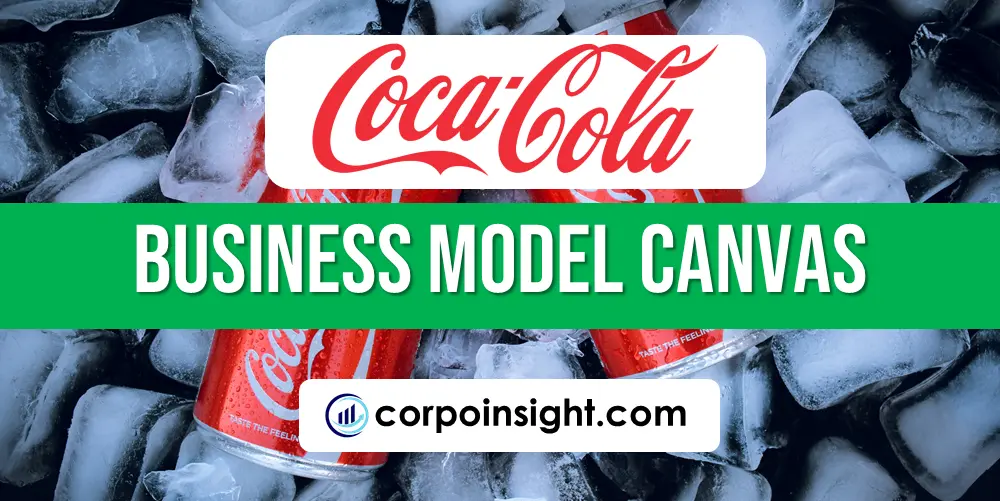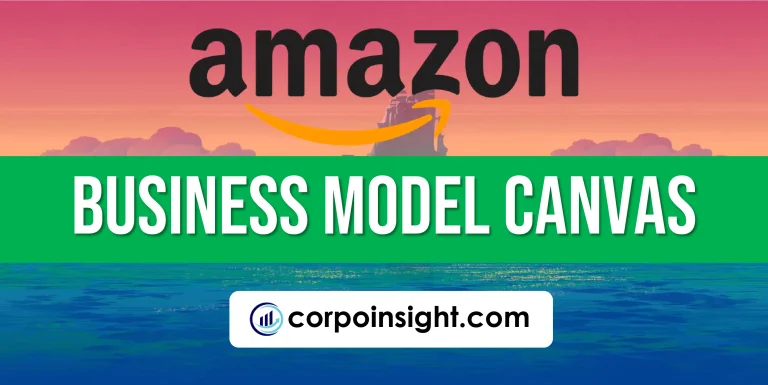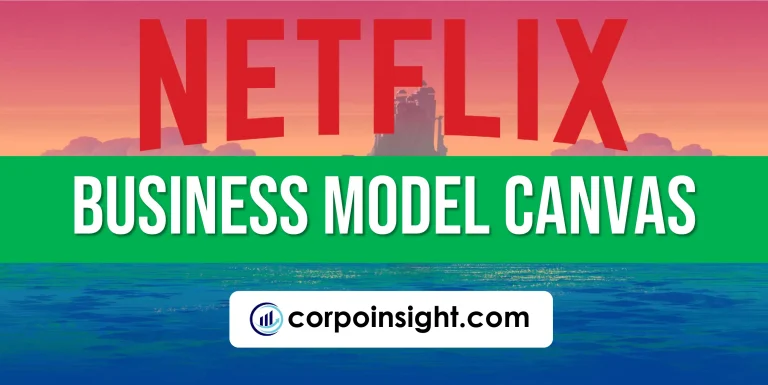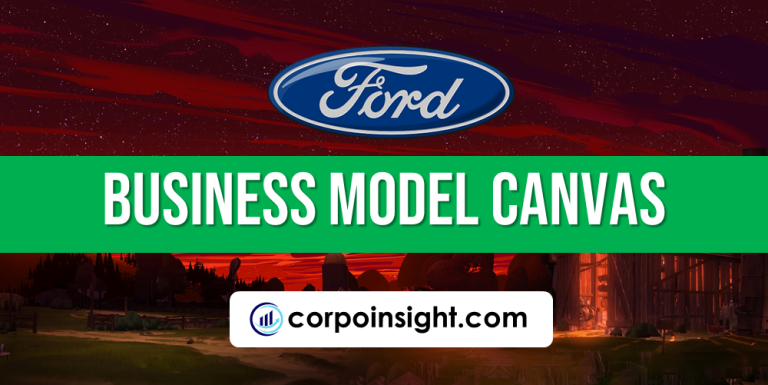Coca Cola Business Model Canvas 2024
Since its invention in 1886 as a morphine-free alternative to popular medicinal tonics, Coca-Cola has become the world’s most iconic and recognized brand of carbonated soft drink produced by The Coca-Cola Company. In this Coca Cola business model canvas, we will get to know its customer segments, value proposition, revenue streams, channels, customer relationships, key activities, key resources, key partners, and cost structure.
Interesting fact!
The prototype Coca-Cola formula tasted so unpleasant that the neighbourhood pharmacist, John Pemberton, had to employ another pharmacist, Frank Robinson, just to create palatable syrup formulations.
Coca Cola Competitors
PepsiCo | Nestlé | Dr Pepper Snapple Group | The Kraft Heinz Company | Unilever | Red Bull | National Beverage Corp. | Constellation Brands | Starbucks | Arizona Beverages USA
Customer Segments – Coca Cola Business Model Canvas
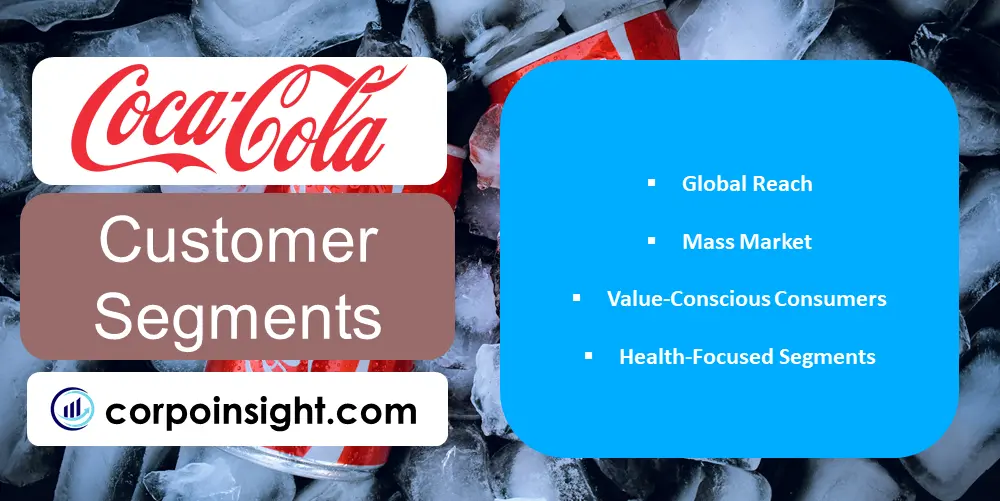
Global Reach: Coca-Cola has a worldwide distribution, selling beverages in over 200 countries. For example, in 2021, 37% of unit case volume was sold in the Asia Pacific region, while North America accounted for 34%. This global diversification allows resilience to local economic conditions.
Mass Market: With affordable pricing like $2 for 2 litres in US grocery stores, Coca-Cola targets the mass consumer market seeking budget refreshments. Surveys show the brand has 76% unaided awareness there, higher than that of competitors.
Value-Conscious Consumers: The company responds to economic downturns by offering multipacks and smaller serving sizes, maintaining strong sales amongst value-focused shoppers—for instance, $3 12-packs represent 19% of North American sales.
Health-Focused Segments: While associated with sugary sodas, Coca-Cola caters to active, health-conscious crowds with alternatives like: smartwater, Vitaminwater, and Powerade sports drinks, which together generate over $2 billion annually and rapidly expand market reach.
Value Proposition – Coca Cola Business Model Canvas

Brand Identity: Coca-Cola establishes strong brand recognition and nostalgia amongst multiple generations of consumers who have fond memories of enjoying the beverages. For instance, 90% aided brand awareness persists in major markets like Brazil and China.
Product Variety: Beyond trademark colas, Coca-Cola offers over 500 sparking and still brands, including juices, teas, coffees, sports drinks and flavoured waters suited to diverse tastes and lifestyles. In 2021, these comprised 33% of sales volume outside the soda portfolio.
Global Distribution Network: With over 250 bottling partners worldwide, Coca-Cola efficiently manufactures and distributes products matched to local consumer preferences across retail, restaurants, vending machines and entertainment venues. This ubiquity and easy availability create high convenience.
Marketing Innovation: Coca-Cola continually modernizes branding through youth-oriented advertising campaigns, digital engagement on social/music platforms and creative marketing alliances. For example, 2021 saw 5.9 billion sponsorship impressions. This mass exposure cements relevance.
Revenue Streams – Coca Cola Business Model Canvas
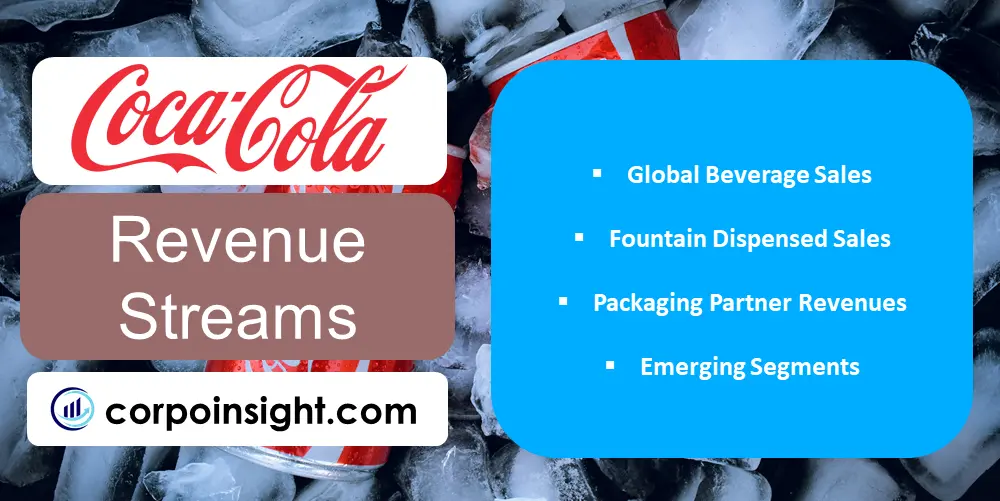
Global Beverage Sales: Coca-Cola generates 70% of revenue, equivalent to $26.7 billion in 2021, from worldwide beverage production and distribution through company-owned or downstream bottling operations. Steady volume demand ensures this longstanding profit flow.
Fountain Dispensed Sales: Coca-Cola products sold to eating establishments for fountain beverage sales contribute approximately 10% of revenues. For instance, McDonald’s alone accounts for over 6% of The Coca‐Cola Company’s North American volume.
Packaging Partner Revenues: As the world’s largest beverage company by retail sales, Coca-Cola holds strong negotiating power to derive income from packaging partners. The latest investor report shows production, bottling and packaging contributions make up 20% of total revenue streams.
Emerging Segments: Coca-Cola is diversifying into new revenue channels via acquisitions of fast-growing beverage brands like Costa Coffee and strategic stakes in Monster Energy drinks, which hint at future income generators outside traditional sparkling sodas.
Channels – Coca Cola Business Model Canvas

Retail and Foodservice: Coca-Cola sells to retailers to stock store shelves and on-premise food service vendors to supply fountain drinks. Retail makes up 75% of volume, while food service is 25% in developed markets like the U.S., driven by ongoing consumer demand and seasonal peak occasions.
Vending and Coolers: Vending machines and cooler equipment provide ice-cold immediate access for convenience and impulse purchases. With 1.9 million machines worldwide, including smart vending innovations, this profitable model accounts for 5% of unit cases globally based on gaps in store/restaurant distribution.
Online and Mobile Apps: E-commerce platforms and mobile apps for fast food/delivery services are emerging omnichannel playgrounds to transact with tech-savvy consumers. Although now only 3% of system-wide volume, Coca-Cola is aggressively participating in digital transformation with partners.
Owned Retail: The Coca-Cola Store, museum attractions, branded entertainment venues, and speciality concept stores build brand connections while selling merchandise. Over 8 million visitors globally promote loyalty and lifetime customer value.
Customer Relationships – Coca Cola Business Model Canvas
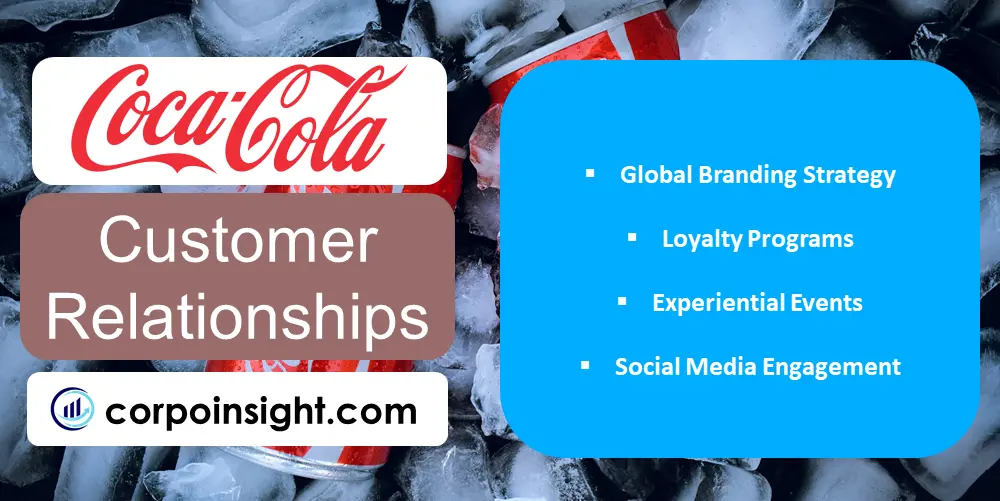
Global Branding Strategy: By cultivating universal brand elements like the Spencerian logo, contour bottle shape, Santa Claus ads, and polar bears, Coca-Cola builds lasting emotional connections that span decades and generations of consumers. 90% global aided awareness reflects these efforts.
Loyalty Programs: Across markets worldwide, Coca-Cola creates membership loyalty programs that offer tailored promotions, sweepstakes, and rewards to keep consumers engaged. These deepen relationships beyond transactional sales, as 60 million members demonstrate via ongoing repeat activity.
Experiential Events: Coca-Cola sponsors massive experiential occasions like World of Coca-Cola museums, Olympic City activations, branded summer tour concerts, and in-person holiday campaigns to foster affinity. 2021 saw 200+ global events cultivating a share of mind.
Social Media Engagement: Through constant interactive content across Twitter, Instagram, TikTok, and other platforms, Coca-Cola earns attention and drives advocacy among digitally-native millennials and Gen Z audiences. The company has over 150 million followers and growing.
Key Activities – Coca Cola Business Model Canvas
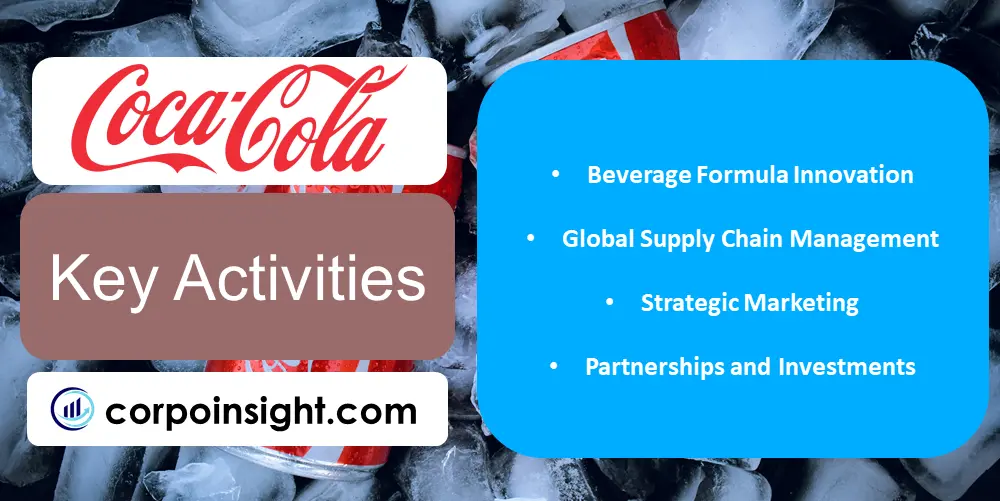
Beverage Formula Innovation: Coca-Cola continually evolves flagship soft drink recipes and develops new no-sugar, energy, coffee, tea, juice, dairy, and plant-based health-focused beverages matched to changing consumer preferences. In 2021, the company delivered over 500 new product innovations worldwide.
Global Supply Chain Management: Through a worldwide integrated production and distribution system, including over 250 local bottling partners, efficient manufacturing capacity, and logistics, Coca-Cola maintains sales velocity and delivery flexibility across diverse regional needs. 60% of the volume comes from this agile system.
Strategic Marketing: Coca-Cola undertakes cutting-edge, data-driven digital, social, experiential, and traditional advertising campaigns leveraging key global events like music festivals, sports, holidays, and movies to promote products and build emotional connections to drive sales. $4 billion is spent annually here.
Partnerships and Investments: The company strategically partners with major customer channels in the food service, retail, entertainment, and hospitality sectors to ensure ubiquity and enhanced branding exposure. Coca-Cola also acquires rising beverage brands and makes equity investments in emerging players.
Key Resources – Coca Cola Business Model Canvas
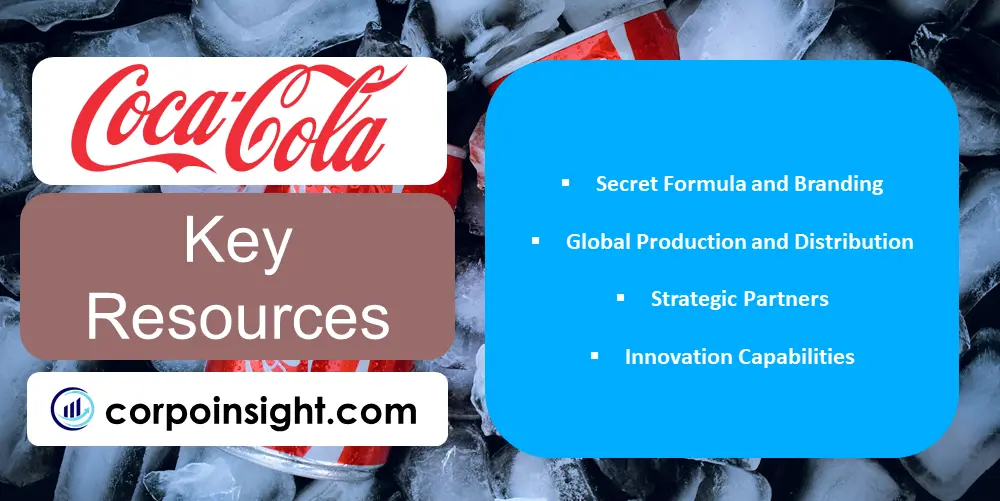
Secret Formula and Branding: The Coca-Cola formula and trademark establishes unmatched brand equity built over 130 years, with 90% global aided awareness. This drives customer loyalty and market-leading value, surpassing competitors’, generating $84 billion in 2020 sales.
Global Production and Distribution: With 900+ plants, vast bottling operations covering multiple geographies and retail sectors, optimized manufacturing/logistics, and $10.5 billion annual capital expenditures, Coca-Cola efficiently delivers products nearly everywhere on an enormous scale.
Strategic Partners: Key bottling, restaurant, entertainment, and retail customer partnerships provide the company with far-reaching channels to bring products to desired points and events in both established and emerging markets. 300+ bottlers and millions of customer outlets underline reach.
Innovation Capabilities: With 80,000+ employees worldwide, including expert marketing teams, product technologists, data analysts, and strategists, Coca-Cola possesses organizational talent and insights to regularly rejuvenate branding, evolve with consumer tastes via new product pipelines, and respond to marketplace changes.
Key Partners – Coca Cola Business Model Canvas
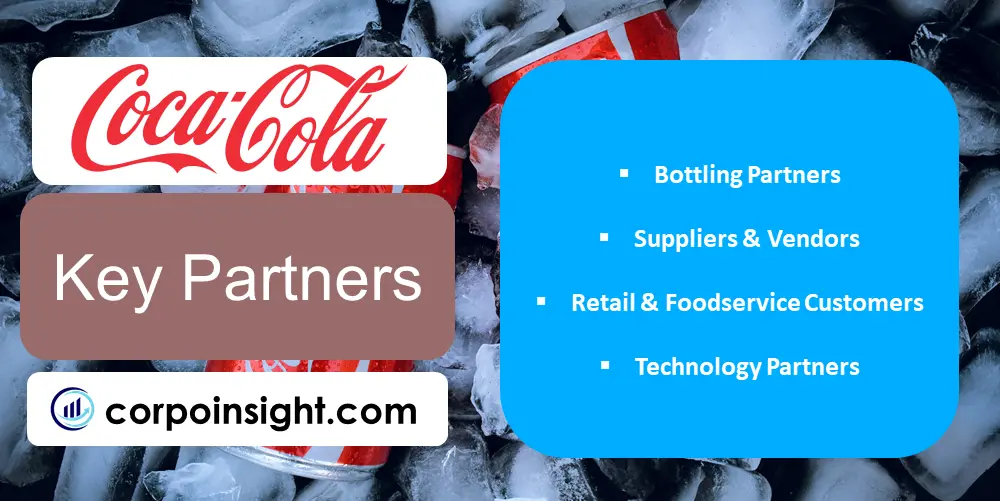
Bottling Partners: Coca-Cola generates shared value through 300+ worldwide bottling partners that manufacture, package, distribute and help market products like Coca-Cola, Fanta, and Sprite to customer channels. These alliances ensure efficiency, scale, and localization across diverse regions.
Suppliers & Vendors: Strategic suppliers provide key resources, including packaging materials, machinery, ingredients, commodities, and other goods integral to operations. For instance, in 2021, Coca-Cola spent $18.4 billion on materials alone via strong strategic supplier relationships enabling responsiveness.
Retail & Foodservice Customers: Long-running collaborations with major retailers like Walmart, McDonald’s, Subway, convenience stores, entertainment venues, etc., drive vast consumer accessibility, visibility, and product velocity through prime shelf space and well-marketed availability in high-traffic locations.
Technology Partners: Coca-Cola innovates by partnering with IT infrastructure, software, IoT sensors, and other digital technology vendors to transform capabilities in e-commerce, data platforms, cloud systems, artificial intelligence, mobile apps, and automation to compete now better and in future tech-enabled decades.
Cost Structure – Coca Cola Business Model Canvas

Ingredient & Packaging Costs: As a manufacturer, the highest costs are materials needed to produce and package beverages, including juice, sugar, PET bottles, aluminum cans, etc. In 2021, COGS equaled $12.4 billion, while packaging represented 25% of operating expenses, given large production volumes.
Marketing Investments: Building accessible widespread brand awareness and consumer loyalty requires significant investments in traditional advertising, sports/music sponsorships, retail trade promotions, and experiential events. Coca-Cola allocates around $4 billion annually for strategic global marketing.
Distribution System: Transporting concentrated products to 300+ bottler factories and then delivering billions of servings worldwide to various retail/vendor accounts incurs substantial distribution costs managed via fuel efficiencies, logistics optimization, and transportation partnerships wherever possible.
Capital Expenditure: Regular outlays to upgrade and expand high-volume production lines, filling equipment, manufacturing capacity, and automation generate predictable expenses, evident in consistent annual CapEx of around $2.5 billion in recent years and $10.5 billion through 2024.
Summary of Coca Cola Business Model Canvas
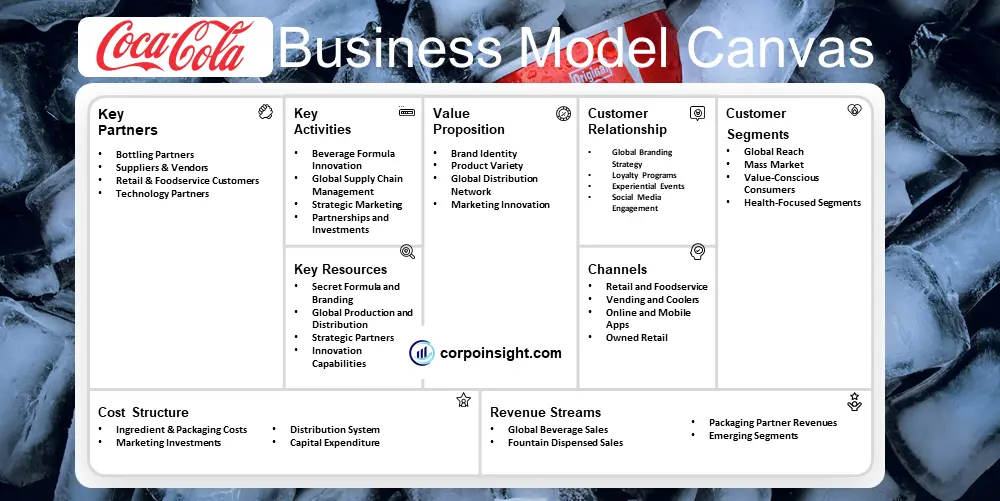
Conclusion on Coca Cola Business Model Canvas
As the world’s leading beverage provider, Coca-Cola’s interconnected business model canvas effectively aligns its unmatched brand recognition, global production and distribution scale, strategic partnerships, and marketing innovation to efficiently deliver a diversified portfolio of affordable, high-demand beverages tailored to evolving consumer preferences across multiple regions, demographics and occasions through conveniently accessible channels, cultivating enduring customer relationships. This formula continues fueling the company’s enduring industry leadership over 130 years and counting.

This is Ahsanul Haque, someone very passionate about digital marketing, SEO, and Data Analytics and founder of the Analytics Empire and currently pursuing my major in marketing at Bangladesh University of Professionals.

